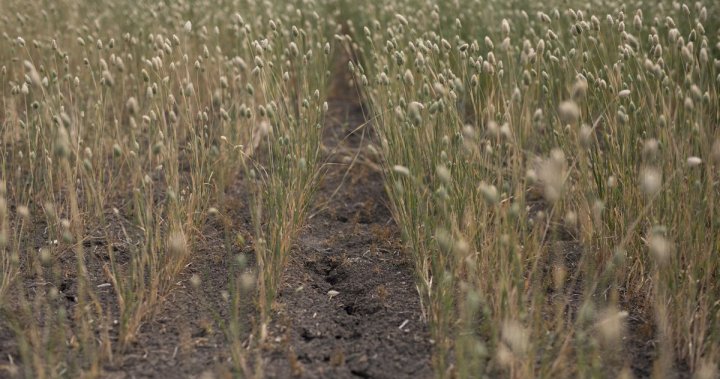Extreme weather, fueled by climate change, is taking a toll on Canada’s agriculture industry, leading to significant financial losses for farmers and governments alike. Saskatchewan, for example, had anticipated a surplus of over $1 billion for the fiscal year ending March 31, 2024, but instead faced a $482 million deficit due to drought and increased government crop insurance payouts. This trend is expected to continue, with experts predicting more frequent natural disasters such as droughts, pests, and reduced yields affecting farmers across the country.
To help farmers cover production losses resulting from natural hazards, such as droughts, floods, extreme heat, and snow, Canada offers crop insurance as part of the Sustainable Canadian Agricultural Partnership. However, extreme weather events, like wildfires, heat domes, and flash floods, have strained farmers nationwide. In Saskatchewan, drought conditions in recent years led to a significant decrease in crop production and substantial budget overruns, prompting additional government spending to support agricultural risk management programs. Other provinces, such as Alberta, have also faced large crop insurance payouts due to droughts, leading to potential premium increases in the upcoming years.
Beyond crop insurance, Canada has a disaster relief framework, AgriRecovery, that provides funding to farmers facing extraordinary costs, such as increased feed expenses during droughts. However, the system has been criticized for being slow to respond to disasters, leaving farmers waiting months or even a year for funding. To address the increasing frequency of severe weather events, experts suggest that governments invest more in agricultural research to develop innovations like drought-resistant seed varieties and other climate change adaptation strategies.
Farmers, like Stewart Oke in Alberta, rely on crop insurance to protect against unexpected losses from extreme weather events. Oke emphasizes the importance of balancing investments in research and technology to ensure the sustainability of crop insurance programs for both producers and governments. In the short term, increasing government support for the agriculture industry to withstand extreme weather is crucial. However, in the long term, experts recommend considering making financial support for farmers conditional on environmental practices, such as soil health and biodiversity management, to promote sustainable agricultural practices and reduce government spending on disaster relief.
As extreme weather events become more frequent and severe, the financial toll on the agriculture industry and governments is expected to rise. Governments will likely need to allocate more funding to support farmers facing climate-related challenges, such as droughts and wildfires. Investments in agricultural research and technology can help mitigate the impacts of extreme weather on crop production, while encouraging sustainable farming practices. Looking ahead, policymakers may need to consider innovative approaches, such as tying financial support for farmers to environmental practices, to ensure the long-term resilience and sustainability of Canada’s agriculture industry in the face of climate change challenges.


